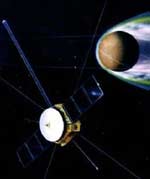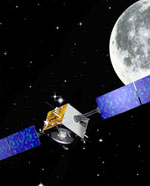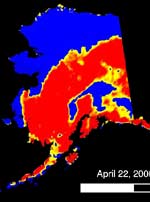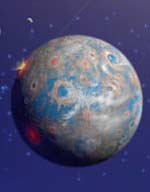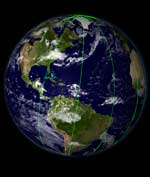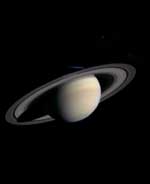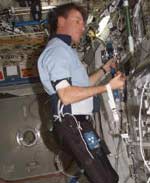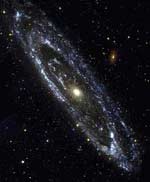
Image credit: NASA
NASA’s Galaxy Evolution Explorer (GALEX) has captured the most sensitive and comprehensive ultraviolet images ever taken of the Andromeda galaxy, M31. By studying the galaxy in the ultraviolet spectrum, astronomers can study some of the fundamental processes that lead the formation of new stars. A new collection of images included Andromeda, as well as the globular cluster M2, and the sky in the constellation of Bootes. GALEX was launched in April, 2003, and will map the sky in the ultraviolet spectrum, looking back to 10 billion years ago.
The most sensitive and comprehensive ultraviolet image ever taken of the Andromeda Galaxy, our nearest large neighbor galaxy, has been captured by NASA?s Galaxy Evolution Explorer. The image is one of several being released to the public as part of the mission?s first collection of pictures.
“The Andromeda image gives us a snapshot of the most recent star formation episode,” said Dr. Christopher Martin, Galaxy Evolution Explorer principal investigator and an astrophysics professor at the California Institute of Technology in Pasadena, which leads the mission. ?By studying this view of the galaxy in the process of forming stars, we can better understand how that fundamental process works, such as where stars form, how fast and why.?
The image of Andromeda, the most distant object the naked eye can see, is a mosaic of nine images taken in September and October of 2003. It combines two ultraviolet colors, one near ultraviolet (red) and one far ultraviolet (blue).
For comparison, a second image shows the Andromeda Galaxy, also called Messier 31, in visible light. Both images, along with other new pictures from the Galaxy Evolution Explorer, are available online at http://www.galex.caltech.edu and http://photojournal.jpl.nasa.gov/mission/GALEX . The new collection of images also includes views of several nearby galaxies; Stephan’s Quintet of Galaxies; an all-sky survey image of the globular star cluster M2; and a deep image of the sky in the constellation Bootes. The Galaxy Evolution Explorer team is also releasing the first batch of scientific data, so the science community can propose additional observations for the mission. These images and data display the power of the Galaxy Evolution Explorer to collect sensitive ultraviolet images of large parts of the sky.
“It?s very rewarding and exciting for the team to see the fruits of their labors,” said Kerry Erickson, the mission?s project manager at NASA?s Jet Propulsion Laboratory, Pasadena, Calif. ?Because people are accustomed to seeing objects in visible light, it?s amazing to see how different the universe looks in ultraviolet and how much information is revealed to us by those observations.?
Scientists are interested in learning more about the Andromeda galaxy, including its brightness, mass, age, and the distribution of young star clusters in its spiral arms. This will provide a tremendous amount of information about the mechanisms of star formation in galaxies, and will help them interpret ultraviolet and infrared observations of other, more distant galaxies.
The Galaxy Evolution Explorer launched on April 28, 2003. Its goal is to map the celestial sky in the ultraviolet and determine the history of star formation in the universe over the last 10 billion years. From its orbit high above Earth, the spacecraft will sweep the skies for up to 28 months using state-of-the-art ultraviolet detectors. Looking in the ultraviolet singles out galaxies dominated by young, hot, short-lived stars that give off a great deal energy at that wavelength. These galaxies are actively creating stars, and therefore provide a window into the history and causes of galactic star formation.
In addition to leading the mission, Caltech is also responsible for science operations and data analysis. JPL, a division of Caltech, manages the mission and led the science instrument development. The mission is part of NASA’s Explorers Program, managed by the Goddard Space Flight Center, Greenbelt, Md. The mission’s international partners are France and South Korea. Caltech manages JPL for NASA
Original Source: NASA News Release

